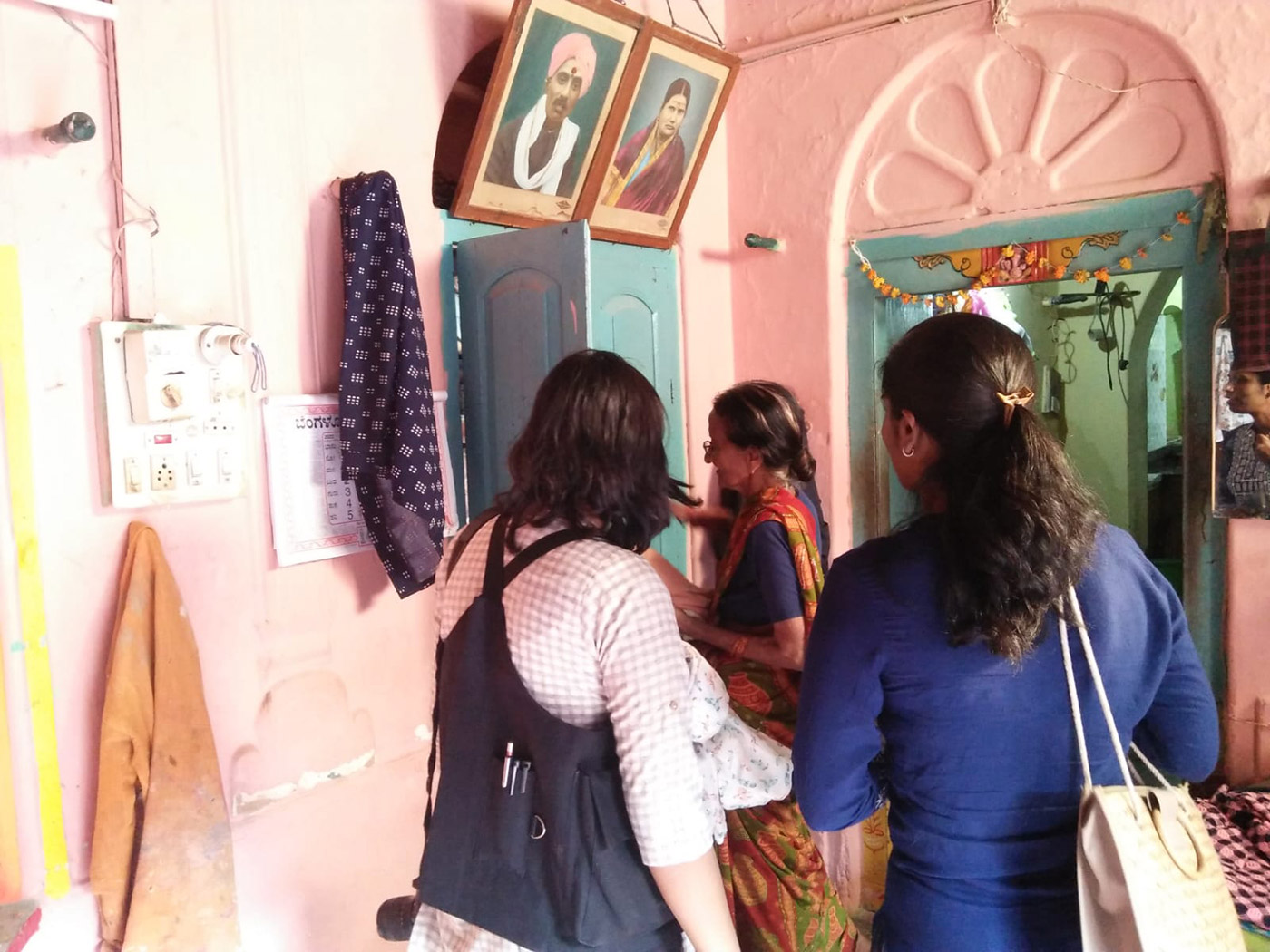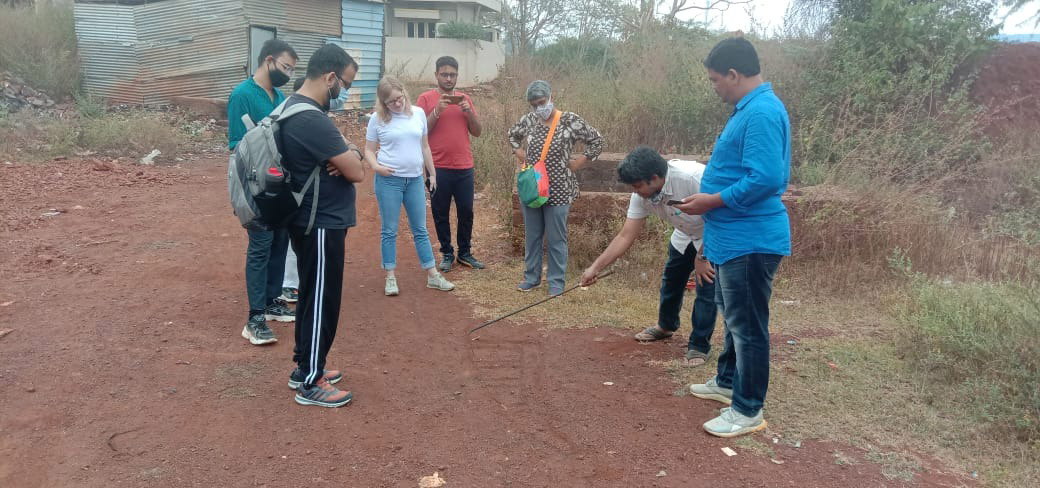“[I]n its original sense, heritage was the property which parents handed down to their children.” - Graeme Davison, 1991

Learning in the field. Image Courtesy: Law, Environment & Planning, SMI
About the Programme
Public spaces are both built and open and include spaces such as streets, parks, marketplaces, Heritage in its simplest sense is the inheritance of the past. However, it is currently widely understood as buildings, monuments and structures, and not as the practices, traditional knowledge, skills and rituals inherited “from our ancestors and passed on to our descendants”. This program of Heritage Design addresses this emerging but often overlooked area of “living heritage”. It is oriented towards deriving knowledge and principles of design from cultural and natural heritage places. It explores new ways that contemporary creative practices (including but not limited to architecture and urban design) can be informed and enriched by history, culture, ecology, tradition, community, and craft.
This program is one of the two postgraduate programs established under the UNESCO Chair in Culture, Habitat and Sustainable Development at Srishti Manipal.
The course is designed to support and encourage students to imbibe values and world views through an inquiry-led learning. Research based inquires that this program seeks to encourage can include studying crafts based communities, their traditional livelihoods, their intergenerational practices; heritage based economies centred around tourism and cultures; debates about what heritage means to different groups of people, to nations and to the world; examining national and international level legislation and policies that deal with heritage conservation and management.
Course Structure
- Disciplinary and Interdisciplinary studios
- Workshops
- Seminars
- Lines of Inquiries (Field work, Case Studies, Investigations, individual or Group Projects, Transdisciplinary Research)
- Theory and Understanding
- Independent Study
- Open Elective
- Practice
- Exhibitions
- Culminating Performances of Understanding (Portfolio, Transdisciplinary research, Projects, Colloquium, Capstone/Dissertation)
- Knowledge Enhancement (ability or skills)
Learning Approach
Learning at the postgraduate level is driven by the lines of inquiries that are enacted through studio-based learning, workshops, theoretical reflections and field work. This approach cultivates a practice through engagement in diverse contexts, collaborative and participatory approaches leading to knowledge development.
Program learning approaches include:
- Engagement with the diversity of current debates and discourses about natural and cultural heritage, tangible and intangible heritage, the contested, socially and culturally constructed nature of heritage, issues of ownership of heritage, and the need for a rights-based approach to heritage management.
- A theoretical and conceptual knowledge of current international and national level legislations, conventions, and policies that deal with heritage conservation and management.
- Using real life opportunities to study the multiple meanings of heritage as held by different communities, groups, people and individuals.
- Collaboration among peers, practitioners and the community.

Learning in the field. Image Courtesy: Law, Environment & Planning, SMI
Capabilities
On successful completion of the course, graduates will have opportunties to nurture the following capabilities-
- to critique using a wide-range of framework and approaches around protection and management of cultural and /or natural assets
- to conceptualise notions of contemporary creative practices, cultural landscapes and heritage compatible development to better the social environments and benefit local communities.
- to engage with professional and academic writing with the intent for furthering practice. (such as proposals, grant writing, case stories/studies, design reports, dissertation etc).
- for advocacy and dissemination (documents, maps, surveys, visualisations, papers and publications)
- for an imaginative inquiry into conservation, creating value and significance, through building inventories, documents, maps, survey and archives about historic sites, local communities and regional practices.
- to design and manage initiatives for heritage protection, in varying capacities across different contexts and scales, while nurturing creativity and participation.
Opportunities
This course provides an opportunity for students to either pursue higher studies, define their own collaborative practice as well as find a position in variety of workplaces i.e. cultural organisations, government bodies, not-for-profit initiatives, art and design practices, research institutions and others.
Opportunities can be identified across different creative economies and some of them would be: advocacy, arts, conservation, knowledge centers, media and tourism.
People
Enquiries

Disciplinary Intersections
The program is informed by the following learning disciplines:
Arts Management
Contemporary Art Practices
Cultural Studies
Curatorial Studies
Design Management
Design Research
Ecology and Environment
Entrepreneurship
Heritage & Conservation
History
Language and Literature
Public History
Research – Art and Design
Social Innovation
Spatial
Sustainability Studies
System Design
Urbanism / Urbanity & Built Environments
Research and Collaboration
Students have opportunities to work within the academic structures and/or work across the following centers and labs:
Center for Experimental Media and Arts (CEMA)
Center for Public History (CPH)
Centre for Reimagining Transitions (CRT)
designEarth Lab
LeNS Lab
ICOMOS-Srishti Collaborative
IMPACT EDGE
Natural Fibres Labs
Odde Research Center
Srishti Films
SUI-Srishti Collaborative
The Kabir Project
The UNESCO Chair in Culture, Habitat, and Sustainable Development
Deccan Living Labs
Sahapedia
FAQs
Heritage sites are of many forms, ranging from physical monuments to traditional craft practices and natural environments. Issues related to preservation of wide-ranging heritage sites, needs many different kinds of expertise and skill set. A heritage design professional should be able to recognize different cultural assets, assess their relationship with the place and its people and respond creatively to keep the cultural landscapes intact with changing times. Thus, heritage design is a two year professional program at Srishti Manipal, grounded in the values of heritage and community participation.
If you believe that cultural and natural heritage is valuable to the process of place-making, if you feel strongly that communities play a strong role in sustaining heritage and if you are passionate about employing your creative skills and strategic thinking to revival / protection of your own heritage assets, then you are well suited to be a professional who will design, and plan for heritage management holistically.
You will engage with different forms and aspects of heritage through lines of inquiries that are enacted through studio based learning, workshops, theoretical reflections and field work. You will also explore related subjects like environment, history, law, entrepreneurship, craftsmanship, politics, and so on, which will inform your understanding and practice as a heritage professional. Over the two years, you will analyze different complexities of heritage sites and evolve your own innovative approach towards its preservation.
The course in Heritage Design, Planning and Management delivers an ideal qualification for students who aspire to work with cultural organizations like museums, archives, conservationists, art centers, etc. Further, you could also work with tourism sector, not-for-profit organizations, research centers, architects and planners, publishing houses, and creative practices like branding, communication, strategy design, or pursue further research as a doctoral candidate.
The program also allows you to apply into a PhD program in a related area. Students interested in continuing with a PhD program can apply for the Integrated MDes PhD program. Further details can be found on our admissions page.
All admission and fee related information could be viewed on our admissions page.



